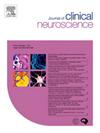Evaluating the brain injury guidelines (BIG) in an Australian trauma centre: A retrospective cohort analysis
IF 1.9
4区 医学
Q3 CLINICAL NEUROLOGY
引用次数: 0
Abstract
Background
The Brain Injury Guidelines (BIG) were developed to improve resource utilisation for patients with traumatic brain injury (TBI). The original BIG have never been validated outside the USA. The unique challenges facing Australian healthcare warrant validation of the BIG in this setting. This study aimed to evaluate the current standard of TBI management, safety of the BIG, and hypothetical resource savings resulting from their implementation.
Methods
A single institution, retrospective cohort study. Patients were identified by searching the database of radiology reports for computerised tomography (CT) studies, for patients presenting to the Princess Alexandra Hospital emergency department (ED) from 1 January 2018 to 1 January 2023. Chart review of the medical record was performed and patients were classified into BIG1, BIG2 or BIG3 based on neurological examination, intoxication, antiplatelet/anticoagulant use, and CT findings. The primary outcome was the need for neurosurgical intervention. Secondary outcomes were worsening neurological examination within 24 h of admission, progression on repeat head CT (RHCT) and post-discharge ED visits and 30-day readmissions. The guidelines were considered to fail if any BIG1 or BIG2 patient required neurosurgical intervention or ICU admission.
Results
878 patients were included, of which 106 (12.1 %) were BIG1, 113 (12.9 %) BIG2, and 659 (75.1 %) BIG3. Subdural and subarachnoid haemorrhage were the most common intracranial haemorrhage (ICH) in all groups. No BIG1 or BIG2 patient showed neurological deterioration or required intervention. Radiological progression was seen in 7 % and 3.4 % of RHCT for BIG1 and BIG 2 patients respectively; in no case did this change management. There was 1 (0.9 %) post-discharge ED visit in the BIG1 group. There were no 30-day readmissions in the BIG1 or BIG2 group. All patients needing intervention or readmission were BIG3. Current practice is not in line with the BIG, with excessive intervention performed in 97.2 % of BIG1 patients and 96.5 % of BIG2 patients. Agreement between the assigned and verified therapeutic plan was perfect (k = 1.00), meaning no patient failed the BIG. Adoption of the BIG could have saved 101 RHCT, 208 neurosurgical consultations and 189 inpatient days.
Conclusion
The BIG are safe in Australia and would significantly improve healthcare resource utilisation. Current practice regularly deviates from the BIG, suggesting significant resource saving to be realised. Future studies should prospectively validate the BIG so widespread adoption can be supported and implemented. Integration with allied health, long-term outcomes and potential modifications to the BIG remain to be explored.
求助全文
约1分钟内获得全文
求助全文
来源期刊

Journal of Clinical Neuroscience
医学-临床神经学
CiteScore
4.50
自引率
0.00%
发文量
402
审稿时长
40 days
期刊介绍:
This International journal, Journal of Clinical Neuroscience, publishes articles on clinical neurosurgery and neurology and the related neurosciences such as neuro-pathology, neuro-radiology, neuro-ophthalmology and neuro-physiology.
The journal has a broad International perspective, and emphasises the advances occurring in Asia, the Pacific Rim region, Europe and North America. The Journal acts as a focus for publication of major clinical and laboratory research, as well as publishing solicited manuscripts on specific subjects from experts, case reports and other information of interest to clinicians working in the clinical neurosciences.
 求助内容:
求助内容: 应助结果提醒方式:
应助结果提醒方式:


